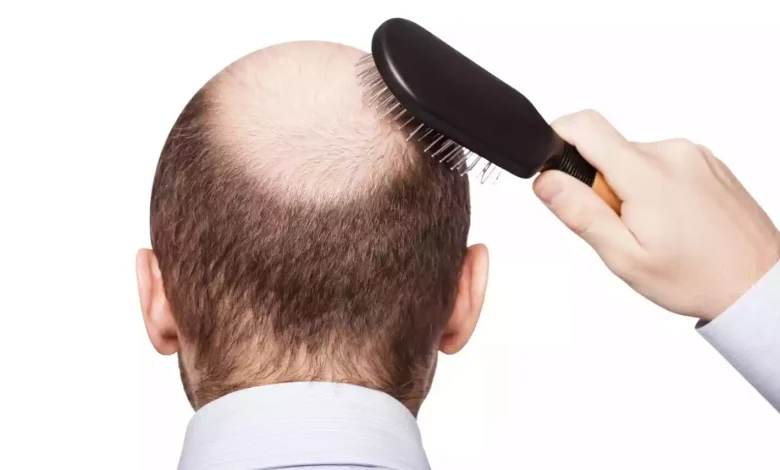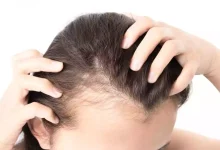
Male Pattern Baldness, also known as androgenetic alopecia, is a prevalent condition affecting a large number of men worldwide. It is characterized by hair loss that occurs in a specific pattern, typically starting with a receding hairline and thinning at the crown. This article aims to provide a comprehensive understanding of Male Pattern Baldness, including its causes, potential treatments, preventive measures, and frequently asked questions.
What is Male Pattern Baldness?
Male Pattern Baldness is the most common type of hair loss in men, accounting for more than 95% of all cases. It is a hereditary condition that affects hair follicles on the scalp, making them sensitive to the hormone dihydrotestosterone (DHT). As DHT levels increase, affected hair follicles undergo a process called miniaturization, leading to the production of shorter, finer hair strands. Over time, these follicles become dormant, resulting in the characteristic baldness pattern.
The Genetics of Male Pattern Baldness
Understanding the genetics behind Male Pattern Baldness is crucial to comprehend its hereditary nature. The condition is strongly influenced by a combination of genetic factors. If you have a family history of baldness, especially from your maternal grandfather or father’s side, you are more likely to experience Male Pattern Baldness.
Factors Contributing to Male Pattern Baldness
Several factors contribute to the development of Male Pattern Baldness. Here are some key elements:
- Hormonal Imbalance: The hormone DHT, derived from testosterone, plays a pivotal role in Male Pattern Baldness. Men with higher DHT levels are more susceptible to hair loss.
- Age: Male Pattern Baldness often begins to manifest as men age, usually starting in their late teens to mid-20s.
- Medical Conditions: Certain medical conditions, such as thyroid disorders or autoimmune diseases, can exacerbate hair loss.
- Lifestyle Choices: Unhealthy lifestyle habits, like smoking, excessive alcohol consumption, and poor nutrition, can contribute to hair loss.
- Stress: Chronic stress can accelerate hair loss, so managing stress levels is essential.
Identifying Male Pattern Baldness: Recognizing the Signs
Male Pattern Baldness follows a distinctive pattern of hair loss, making it relatively easy to identify. Here are some common signs to look for:
- Receding hairline, usually starting at the temples
- Thinning hair at the crown of the head
- Formation of a “M” shape pattern on the scalp
- Hair becomes finer and shorter over time
Diagnosing Male Pattern Baldness
Diagnosing Male Pattern Baldness typically involves a physical examination and a detailed medical history. A dermatologist may also perform a scalp biopsy to determine the extent of miniaturization of hair follicles. Early diagnosis can facilitate timely intervention and better treatment outcomes.
Treating Male Pattern Baldness: Options and Effectiveness
While Male Pattern Baldness is a permanent condition, various treatment options are available to slow down or manage hair loss effectively. Here are some commonly used treatments:
- Medications: FDA-approved medications like Minoxidil and Finasteride can help stimulate hair growth and slow down further hair loss.
- Hair Transplantation: Hair transplant procedures involve the extraction and transplantation of hair follicles from donor areas to balding areas.
- Low-Level Laser Therapy (LLLT): LLLT devices, such as laser caps or combs, use low-level lasers to stimulate hair growth.
- Platelet-Rich Plasma (PRP) Therapy: PRP therapy involves injecting platelet-rich plasma from the patient’s blood into the scalp to promote hair growth.
- Lifestyle Changes: Adopting a healthy lifestyle, including a balanced diet, regular exercise, and stress reduction, can positively impact hair health.
Preventing Male Pattern Baldness: Tips and Strategies
While it may not be possible to prevent Male Pattern Baldness entirely, certain measures can minimize its impact. Consider the following preventive strategies:
- Maintain a balanced diet rich in essential nutrients for hair health, such as vitamins A, C, D, and E, as well as iron and zinc.
- Avoid excessive heat styling, as it can damage hair follicles.
- Be gentle while brushing or combing hair to prevent unnecessary breakage.
- Use a mild shampoo and conditioner suited for your hair type.
- Avoid smoking and excessive alcohol consumption, as they can contribute to hair loss.
FAQs About Male Pattern Baldness
- Is Male Pattern Baldness reversible? Male Pattern Baldness is not reversible, but it can be effectively managed with appropriate treatments.
- Can stress alone cause Male Pattern Baldness? While stress can exacerbate hair loss, it is not the sole cause of Male Pattern Baldness. Genetic factors play a more significant role.
- Are over-the-counter hair growth products effective? Over-the-counter hair growth products, such as Minoxidil, can be effective in stimulating hair growth for some individuals.
- Are there any natural remedies for Male Pattern Baldness? While some natural remedies may improve hair health, no cure for Male Pattern Baldness has been scientifically proven.
- Can women experience Male Pattern Baldness? Yes, women can experience a similar pattern of hair loss known as Female Pattern Baldness, which also has a genetic basis.
- Can wearing hats or helmets cause Male Pattern Baldness? Wearing hats or helmets does not cause Male Pattern Baldness. However, excessively tight headwear may lead to hair breakage.
Conclusion
Male Pattern Baldness is a widespread condition that affects many men worldwide. While it is primarily influenced by genetics, various factors contribute to its development. Early diagnosis and timely intervention can significantly improve treatment outcomes. While Male Pattern Baldness is not reversible, several effective treatments are available to manage the condition and promote hair growth. By adopting healthy lifestyle habits and following preventive measures, individuals can minimize the impact of Male Pattern Baldness and maintain healthier hair.

